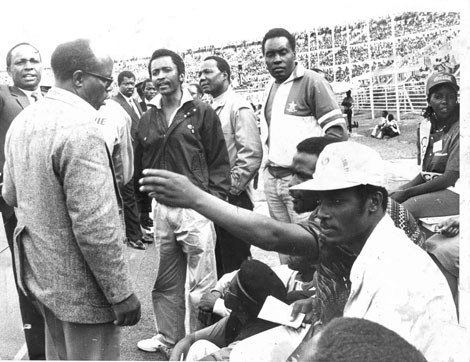×
The Standard e-Paper
Join Thousands of Readers
 |
| Mathew Adams Karauri (left), Assistant Minister and Chairman Caretaker Committee of Kenya Football Federation attempts to remove journalists encroaching on the playing surface at Nyayo National Stadium during an international match. |
By Gishinga Njoroge
Kenya should easily beat the Comoros in the forthcoming second round of the Africa Cup of Nations football qualifiers and if only for sentimental reasons, Harambee Stars’ third round opponents ought to be Liberia.